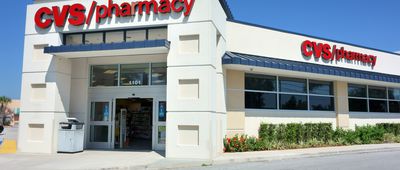Short-term savings often take the form of an emergency fund -- the three to six months' worth of living expenses everyone should have in case of a layoff, family crisis, medical emergency, or other misfortune. Savings can also be set aside for short-term goals or expenses that may come up in the next one to three years, such as a vacation, renovations, or a car.
It's important to stash this money somewhere safe and accessible, rather than tie it up in risky investments. "You're going to need it, and you don't want it flushed away," says Chad Smith, a certified financial planner in North Carolina. "Avoid doing anything aggressive with it."
So, where should short-term savings go?
Savings Account.
Savings accounts are one of the best ways to make sure your money is secure and available when needed. The Federal Deposit Insurance Corp. and the National Credit Union Share Insurance Fund guarantee that if a bank or credit union goes under, each customer's lost money gets reimbursed up to $250,000. The downside is that the average interest on a savings account is 0.41 percent, according to Bankrate, although online banks may offer higher rates. Ally Bank savings accounts earn 1 percent.
High-Interest Checking Account.
Often the highest interest rates are offered by regional banks or credit unions, and many of these regional institutions let anyone join, no matter where they live. Lake Michigan Credit Union, for example, opens up membership to people living in the Lower Peninsula of Michigan and those who have a family member with an account -- but also anyone who makes a $5 donation to the West Michigan chapter of the ALS Association.
The LMCU Max Checking account offers members 3 percent APR for the first $15,000; additional funds accrue no interest. The account also refunds up to $15 in ATM fees each month and is part of a national network of ATMs with free withdrawals.
Most high-yield checking accounts have monthly requirements. In LMCU's case, account holders must make 10 debit card purchases, log in to the account four times, sign up for emailed statements, and set up direct deposit. At many banks and credit unions, transfers from other bank accounts, including personal accounts, count as direct deposits. Some people buy small-denomination gift cards online or buy gas to meet the 10-purchase requirement.
It's a bit of a hassle, but using a high-yield account for everyday checking and short-term savings can be rewarding. The difference between 0.41 percent interest and 3 percent interest on $15,000 over three years is $1,206.
Credit Card Debt.
Paying off debt may not seem like a way to save money for an emergency, but consider that the average interest rate for credit card debt is 15.72 percent, according to Bankrate. That means paying off debt yields a guaranteed return of 15.72 percent -- much more than a safe short-term investment would make.
The idea here is to use money that would otherwise go into an emergency fund to pay down credit card debt, and fall back on the credit card in case of an emergency. However, keep in mind that some payments cannot be made with a credit card. It is wise to save at least several months' worth of funds for cash-only expenses such as rent rather than put all your savings toward eliminating high-interest debt.
CD Laddering.
This tactic is a bit more complicated but might result in a better yield, and a bank or financial planner can lend a hand. CD laddering is intended for short-term savings that might be needed in one to two years, as opposed to an emergency fund, which should be kept in a liquid account.
To build a CD ladder, invest equal amounts of money in certificates of deposit with different maturity dates. (The longer the term, the higher the interest rate.) For instance, buy CDs that mature in six months, one year, 18 months, two years, and so on. As the CDs mature, renew them for the longest term on your ladder. This strategy ensures that cash will be available regularly to use if necessary. In the meantime, the money earns more interest than it would in a most savings accounts.








